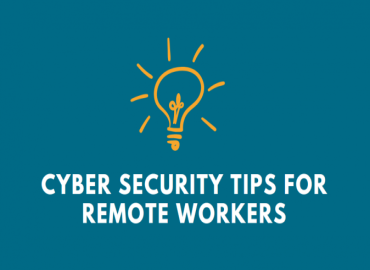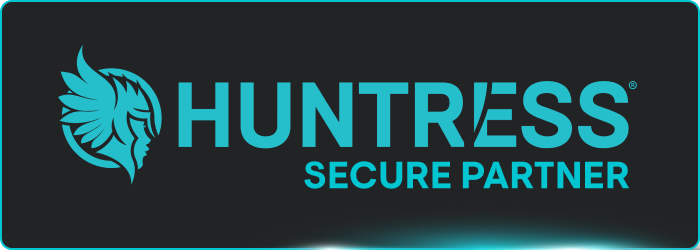Cyber Security Tips for Remote Workers
Since, today Information Technology has progressed so much that it is very easy and convenient for the people to conduct their work at the comfort of the home. However, with the advantage of running the business from home that we receive using technology has also its own disadvantage: Online Security Threats. There are chances that remote workers can lose their privacy and also result in a breach of the company security.
Types of Online Threats
Here are some of the online threats which the remote workers must be aware of.
- Using personal devices and networks: While working from home, the workers might have to use their personal devices and home networks for the job which usually does not have the necessary tools like strong antivirus software, customized firewalls, and automatic online backup tools. Hence, the risk of malware entering your devices is high.
- Unsecured Wi-Fi networks: The workers while working from home may not have secured Wi-Fi networks and hence they become usual prime spots for hackers to spy on internet traffic and collect user information.
- Scams targeting remote workers: Since, remote workers work from home using their unsecured Wi-Fi networks it becomes easy for hackers to launch various scams campaigns and hijack critical information and data.
Cybersecurity Tips for Remote Workers
In accordance with the company’s protocols about handling certain aspects of cybersecurity, the following safety measures can be taken to protect yourself from being the victim of cyber-attacks.
- Set Strong Passwords
Make sure you set strong and unique passwords for all your accounts. Ensure that your passwords are unique and comprise a long string of upper- and lower-case letters, numbers and special characters. Also, using the same password for all the accounts is not a best practice, because if anyone account is taken over by the attackers, then they can perform credential stuffing to compromise all your accounts so be careful about that.
- Set up Two-factor Authentication
Set up two -factor authentication (2FA) and two-step verification (2SV) for your accounts which provides an additional step like an email or text message confirmation, a biometric method, etc. to add an extra layer of protection.
- Use an antivirus software
Use good antivirus software that can act as the next line of defense by detecting and blocking known malware. Even if malware manages to enter the firewall, an antivirus can detect and remove it.
- Secure your home router
To protect your home network from malware, first, change your router password while installation. Besides, install firmware updates so that security vulnerabilities if any can be patched. The encryption should be set to WPA2 or WPA3. Restrict inbound and outbound traffic, use the highest level of encryption available, and switch off WPS.
- Install updates regularly
Regularly update the device software and other applications because updates usually include patches for security vulnerabilities that have been uncovered since the last iteration of the software was released. You can either set updates to run automatically or do it manually.
- Lock your device
To keep your device secure, especially if you work in a public space, lock your device using a password to encrypt its contents until someone enters the password. Besides, you can also use an additional full-disk encryption tool.
- Use a VPN
A VPN encrypts the internet traffic making it unreadable to anyone who intercepts it hence increases your online privacy. VPN helps to keep away snoopers like the Internet Service Provider (ISP), government agencies, or hackers from your system. Make use of a VPN that has high speed and reliability.
- Set up firewalls
Firewalls act as a barrier between your device and the internet and prevent threats from entering your system. So, the malicious programs cannot enter your system to leak confidential information. Your device’s operating system normally has a built-in firewall. Also, enable the hardware firewalls that are built into many routers. Besides there are plenty of third-party firewalls available for added protection.
- Regular back up of data
Data from your device are always prone to lose due to human error, physical damage to hardware, or a cyberattack hence we should ensure that the data are backed up on a regular basis. Even though the hardware backup option is available, it is convenient and cost-effective to store data in the cloud. In cloud backup services, the user can customize their backup schedule and storage options.
- Check for phishing emails and sites
Phishing emails, voicemails (vishing), and text messages (smishing) are some of the common methods used by cybercriminals to “phish” for information. The information thus obtained can be used for further campaigns like spear-phishing (targeted phishing attacks), credit card fraud, and account takeover fraud. To check for phishing emails, first, check the sender’s email address for minor errors like spelling mistakes or poor grammar in the subject line and email body. Hover over links to check the URL and do not click the links or attachments unless you are 100% sure about the sender. Also, while visiting a website, check for its credibility before entering any information. Usually a phishing site lack an HTTPS padlock symbol (although phishing sites have SSL certificates), misspelled domain names, poor spelling and grammar, lack of an “about” page, and missing contact information.
- Check for work-from-home scams
There might be an increase in the work-from-home scams and other schemes that target economy workers. Many of these requests personal information or payments before you can begin work. By the time you realize it is a scam, the fraudster might have already terminated contact and stolen your money. Use only reputable legitimate sites for any freelance work. Also never share personal information with a client without doing proper research.
- Use encrypted communications
For communication with fellow workers regarding sensitive information, you must use secure means of communication. Mainstream messaging services such as Signal, WhatsApp, and Telegram enables end-to-end encryption. If you need to communicate via email, you can switch to specialized encrypted email providers such as Hushmail and SendInc.


